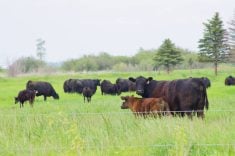Ratification of the Comprehensive and Progressive Agreement for Trans-Pacific Partnership was music to David Haywood-Farmer’s ears.
“It will put us in a great spot to get things done,” said the president of the Canadian Cattlemen’s Association.
Getting the deal done on the CPTPP was a top lobbying goal for the CCA, even though there were moments of doubt.
“I am happy to see the lobby efforts from all of us that the ratification went through so smoothly,” he told delegates to the Alberta Beef Producers annual meeting held in Calgary Dec. 3-5.
Read Also

House ag committee to undertake several studies
The House of Commons standing agriculture committee has set its agenda for the coming months. Members began the fall sitting with a two-hour update on international trade
Japan is a member of the CPTPP and is Canada’s second-best beef customer.
On Jan. 1, beef tariffs drop by 11 percent to 27.5 percent followed by annual minor tariff reductions of less than one percent until duties hit nine percent by 2033.
Exports add $602 per head so better access is critical following the BSE-induced market collapse, said Haywood-Farmer.
“A large part of the last decade has been spent focusing on regaining lost markets and access due to BSE in 2003. Since that has occurred, our focus has shifted to new trade agreements to keep producers competitive,” he said.
This year most beef exports are up in volume and value, said Ron Glaser of Canada Beef.
However the best customers for Canadian beef are here at home.
In 2017, total beef consumption in Canada was 923,820 tonnes of which about three-quarters was domestic product while the rest was imported.
The U.S. is the primary destination for Canadian exports at about 75 percent but Canada only fills about three percent of their total beef supply.
Sales to Asia are increasing but are relatively small in overall volumes.
“In all of these markets around the world we are in single digits in terms of their total supply. We are not there to sell to every single customer. We are there to find that right customer who aligns with Canadian beef and values our brand positioning and can be a long-term partner,” he said.
In the last five to seven years, China has become a growth market and since chilled and boneless beef was allowed, sales should increase.
Canadian beef is also found in Taiwan, Vietnam, Singapore, Philippines and Indonesia. These accept small volumes now but growth from repeat customers is building.
Prior to the BSE discovery in Canada, Mexico and Latin America offered markets for cow beef. Mexican sales have declined partly because that country is growing its domestic beef industry and is starting to export beef.

















